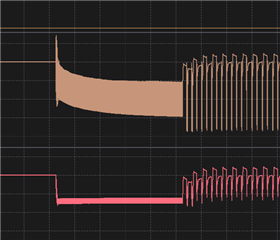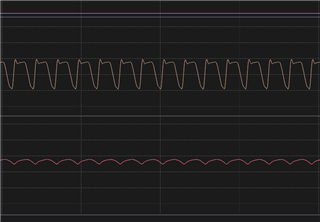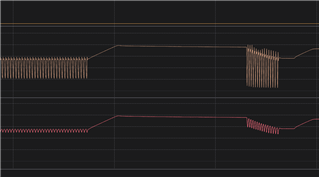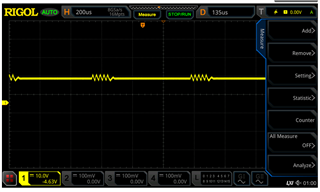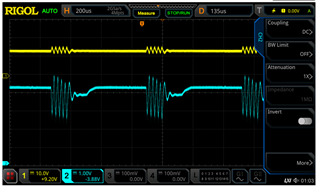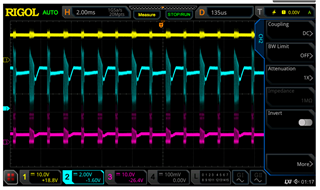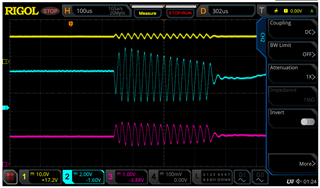Tool/software:
Hello,
I have attached my schematic and screenshots of my layout along with the scope output. The schematic isn't entirely correct though. I have added a 470-uF aluminum cap to the output. I also add a 47uF capacitor on the input. R9 is now 15kOhm, C7 is 1nF and C6 is 100pF. I know R10 and R12 are swapped and have been corrected. The top signal is the switching signal. The bottom signal is the power input. I zoomed in so you can see the ringing. I also have tried PFM and PWM modes. 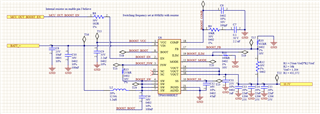
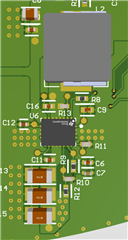
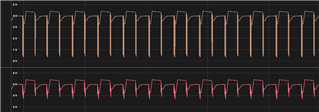

I can make the noise go away if I load it up with a 120ohm resistor to force a load on it. That makes it run better but isn't the real application. This needs to turn on for the amplifier IC to actually work so it would be in low load conditions to start with with the noise on the power, the amplifier doesn't work correctly (brownout and gets lost). So from a practical point, I can't just load this and take it away when I need the normal amplifier functionality. I also not on my power supply that if I supply the 4V input, I get up to 1 A of power draw for just those resistors. So with all that being said, how can I get this noise out of the boost regulator without having to load it like this and get it to work as required? Is it a loop compensation issue? Is it a capacitance or feedback issue? Any help is appreciated.


